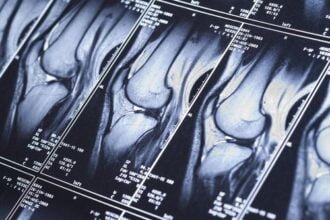The recent article in the New England Journal of Medicine, “Time for a Patient-Driven Health Information Economy?” presents a good overview of the need for, and hurdles in achieving, a unified patient-centered data platform that can be accessed from everyone taking care of the patient.
The recent article in the New England Journal of Medicine, “Time for a Patient-Driven Health Information Economy?” presents a good overview of the need for, and hurdles in achieving, a unified patient-centered data platform that can be accessed from everyone taking care of the patient.
 We all know that clinical health data, created by providers, resides in fragmented silos within each institution that takes care of a patient. The main approach to “interoperability” has been to create queries that enable a given EHR to search for and import data in connected external systems. This, of course, creates out-of-sync dilemmas for copies of records in different systems, and requires query refreshing in order to pull updated data, or even to push updated data out to all those who have connected previously, whenever there is an update to the record. This is what Health Information Exchanges have been all about – facilitating the transfer of copies of data between silos, using standardized formats (such as the CCDA), but leaving the silos intact. This remains a provider-centric way of looking at health data exchange.
We all know that clinical health data, created by providers, resides in fragmented silos within each institution that takes care of a patient. The main approach to “interoperability” has been to create queries that enable a given EHR to search for and import data in connected external systems. This, of course, creates out-of-sync dilemmas for copies of records in different systems, and requires query refreshing in order to pull updated data, or even to push updated data out to all those who have connected previously, whenever there is an update to the record. This is what Health Information Exchanges have been all about – facilitating the transfer of copies of data between silos, using standardized formats (such as the CCDA), but leaving the silos intact. This remains a provider-centric way of looking at health data exchange.
Beyond the way that clinicians document their interactions with patients within their EHR systems, there is a growing amount of consumer-created content that is increasing in its sophistication and relevance to an individual’s state of health. Granted that this is a sub-set of all consumers – those who actively want to manage their health and have access to all their data – but it will likely increase as technology changes and society changes. This was also pointed out in the article.
In order to facilitate the emergence of a robust health information economy, we need to have a universal health data platform that can: (1) standardize incoming data, regardless of its origin; (2) correctly match the right patient for all the incoming data streams; (3) be accessible via standard, common APIs, so that multiple apps and EHRs can access the consolidated data directly.
We can see what we need to build. The biggest stresses in achieving this are the massive investments already made in legacy systems, on the one hand, and the consumer (and wearable app) pressure to “free the data” so it can be used by the consumer, on the other hand.
We have built the foundation for a universal patient-centered data platform, and are starting to populate it. My belief is that this represents a disruptive challenge in the health IT marketplace, championed by many in the policy-making arena, but resisted by institutions that are deeply invested in their legacy way of approaching health data. I don’t believe that this will come through EHR vendors, as they are currently structured. Nor will consumer-only approaches do the job either. There needs to be a way of aggregating and unifying data from clinician sources (EHRs), payer sources, consumer sources, and device sources, and make that data immediately and usefully available to all the data contributors. The patient needs to be at the center of this architecture, even if the patient does not want to be particularly involved – the data moves between stakeholders, centered around the patient (who can provide and edit permissions). This is what “data liquidity” will look like in healthcare.








